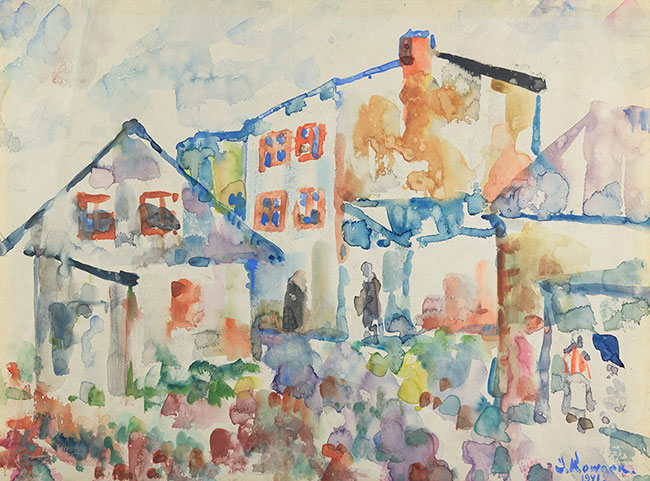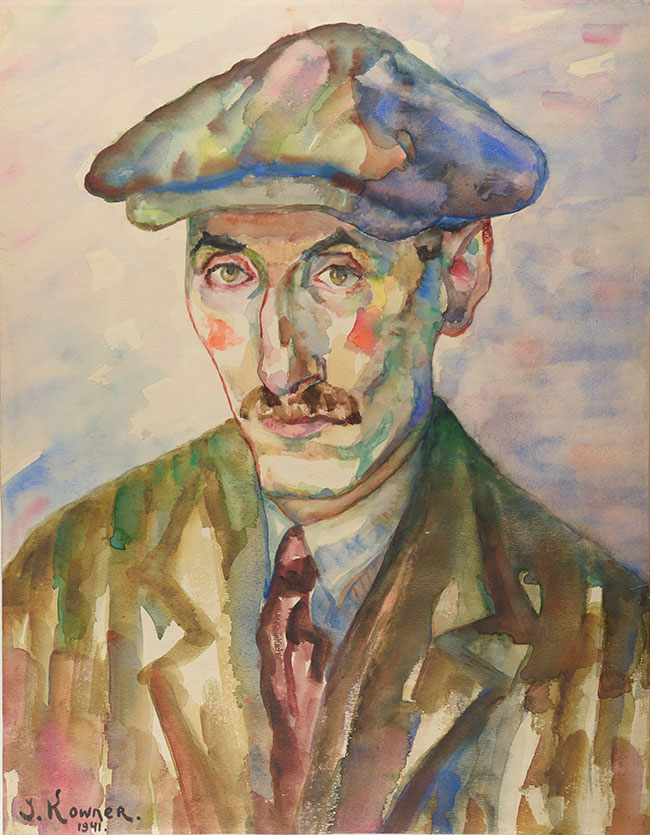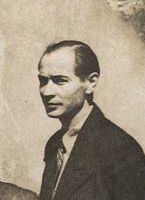
Watercolor on paper
26.2 x 35.3 cm
Collection of the Yad Vashem Art Museum, Jerusalem
Gift of Leon and Carmela Kowner, Haifa

Watercolor on paper
49.4 x 38.6 cm
Collection of the Yad Vashem Art Museum, Jerusalem
Gift of Leon and Carmela Kowner, Haifa

Josef Kowner moved to Lodz with his family as a child. Later he attended the St Petersburg Academy of Art, completed his studies in Düsseldorf, Kassel, and Paris, and exhibited his work in major Polish cities. He was also editor of the periodical Forma and a member of the Association of Polish Artists. After the German occupation, he was interned in the Lodz ghetto, where he was one of the few painters who were granted financial support by Chaim Rumkowski, chairman of the Judenrat. Kowner made designs for the ghetto carpet workshop and even secretly exhibited his works in his apartment, where he also hosted clandestine concerts. Deported to Auschwitz-Birkenau in 1944, he was then transferred to the Wöbbelin camp near Ludwigslust, Germany, where he was liberated in May 1945. Ill and wounded, he immigrated to Sweden. He settled in Kalmar and continued as a prolific artist. His friend Nachman Zonabend recovered the artworks that Kowner had produced during the Holocaust and that were left hidden in the Lodz ghetto and returned them to him.